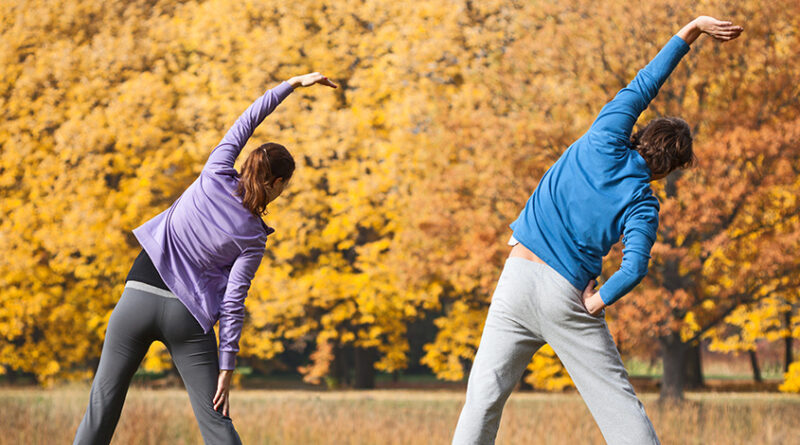Why You Should Consider Tai Chi
By Jean Sica
Half of all Americans suffer from one or more chronic conditions such as cardiovascular diseases, cancer, diabetes, COPD and arthritis.
People are living longer, but what of the quality? And the costs?
The Centers for Disease Control estimates that health care costs for treatments of chronic disease accounts for more than 7% of all health care costs. There is a dearth of information about improving our health through proper exercise and nutrition. We are also advised to reduce our stress, adopt a pet, take long walks, and more.
And then there are more than 100 million people worldwide, including millions of Americans, who have found the ancient martial art of tai chi to be an invaluable addition to their healthy habits.
Tai chi chuan — literally translated as “supreme ultimate fist” — has been around for 3,000 years but is relatively new in the United States. Since its arrival here in the 1950s, it’s become almost as popular as yoga.
Tai chi consists of a series of upright movements performed in a slow continuous sequence. The discipline is based on the idea that in softness there is strength, of using the breath, pointed attention and balanced groundedness; hence tai chi is often referred to as a “moving meditation.”
There are five leading styles: chen, yang, wu-hauo, wu and sun. Each style has its own unique characteristics of movements.
Several movements in a series are called a form. Some forms have as few as five movements, others more than 100. Some styles move more slowly than others. And some styles are more athletic than others. This myriad tai chi styles to choose from means there is a style for just about anyone.
Tai chi’s gentle, low-impact movements are generally safe and adaptable for people of all ages and physical abilities and has been clinically shown to be especially beneficial for older adults who are recovering from injury, dealing with disease or want to stay as active and healthy as long as possible.
• Tai chi may be just as effective as weight loss and lowered sodium intake for individuals concerned with lowering blood pressure. In addition, according to the American Heart Association, it was found that “… patients with coronary heart disease [in] a six-month tai chi program improved PA, weight, and quality of life compared with a three-month intervention.”
• Tai chi is clinically proven to be effective as rehabilitation for people with cardiopulmonary conditions and chronic obstructive pulmonary disease. According to Harvard Medical School, the movements safely and gradually strengthen the heart and major muscle groups. The deep breathing exercises enhance oxygen uptake, which can ease breathlessness.
• It can significantly reduce chronic pain for conditions like fibromyalgia and can improve neurological function for people with Parkinson’s disease. A study published in 2013 in the National Library of Medicine showed that tai chi, “…when implemented as a complementary exercise regimen, can be therapeutically beneficial to people with neurodegenerative conditions.”
• It’s beneficial as physical therapy and pain management for osteoarthritis, encouraging joints to become more flexible. According to the Osteoarthritis Foundation International, practicing Tai Chi relieve discomfort in people affected by arthritis, osteoarthritis or any other pathology that causes joint pain. And the practice can also delay the appearance of these in healthy people.
• Tai chi has been clinically proven to help cancer survivors. A 2004 study at the Wilmot Cancer Center in Rochester reported that women who practiced tai chi showed significant improvements in self-esteem and quality of life when compared with the women in the psychosocial support group. In addition, the deep breathing and the tiny unconscious muscular contractions of tai chi activate the lymphatic system to help your body eliminate toxins and waste.
• Regular tai chi practice can increase your energy. The slow, deep, regular breathing and movements combine to oxygenate your muscles and deep tissues. Strength and balance are enhanced resulting in stronger muscles and bones resulting in more energy and better weight-control.
• Tai chi improves balance and increases proprioception, which is the ability to sense the position of one’s body in space. Fear of falling can make you more likely to fall. Some studies have found that tai chi training helps reduce that fear. In published guidelines for tai chi, the CDC explained that “tai chi addresses gait problems by teaching ‘correct’ movement of lower limbs.”
• Tai chi has been shown to help those who suffer from mood disorders and low self-esteem. “Accumulating evidence suggests that tai chi, a popular mind–body intervention that originated as a martial art, can significantly regulate emotion and relieve the symptoms of mood disorders,” according to Frontiers in Psychiatry in 2019.
How do you find a good tai chi program? How do you choose the right one for you? What makes a good tai chi instructor? A guiding principle is summed up by the Portland [Oregon] Tai Chi Academy: “A good tai chi teacher should not only teach you the right moves but also inspire you to prepare your mind and body to realize your true potential.”
 Jean Sica is a certified personal trainer and tai chi instructor offering concierge group and private strength. She can be contacted at jsicafitness@gmail.com. For more information, visit kokorofitness.org.
Jean Sica is a certified personal trainer and tai chi instructor offering concierge group and private strength. She can be contacted at jsicafitness@gmail.com. For more information, visit kokorofitness.org.

